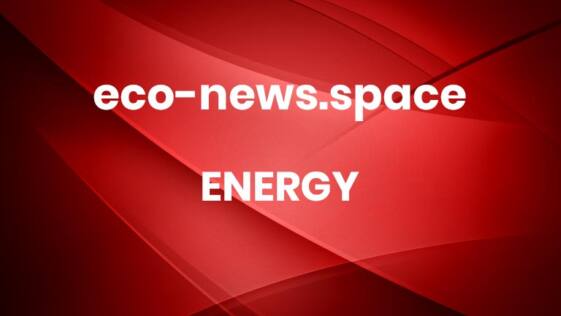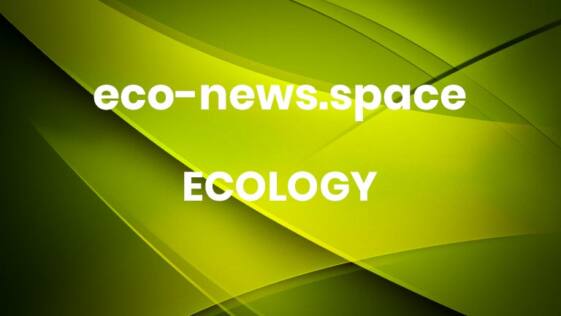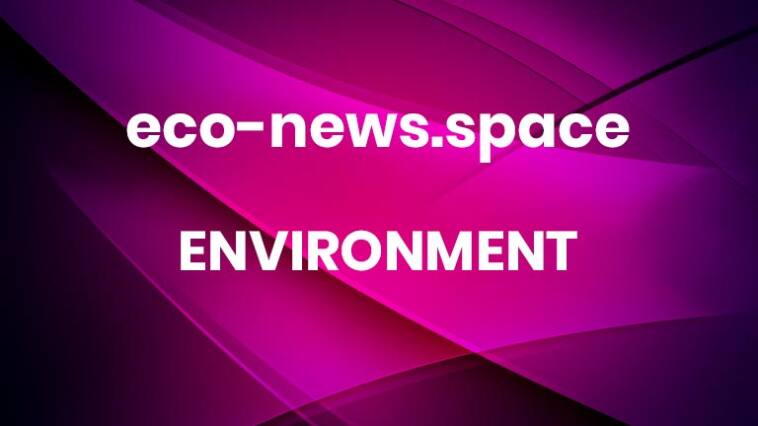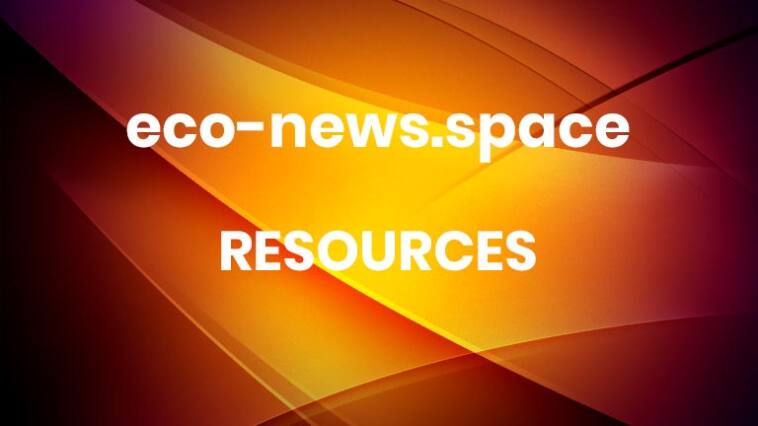HOTTEST
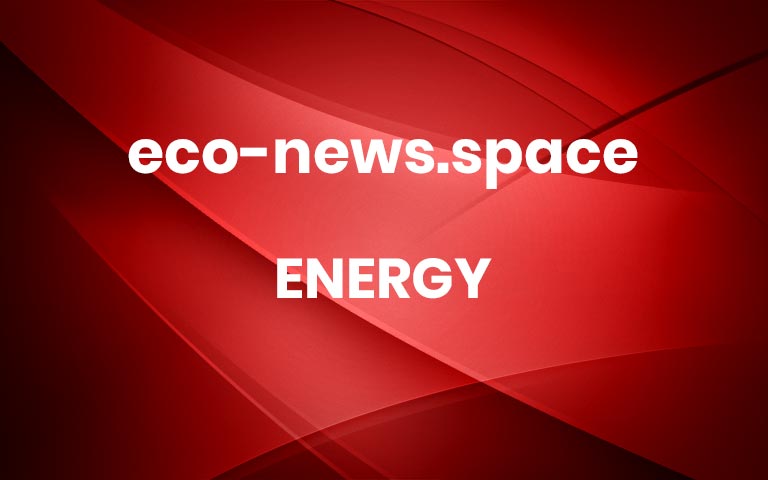
The long-term aspirational goal of the Paris Agreement on climate change is to cap global warming at 1.5 degrees Celsius above preindustrial levels, and thereby reduce the frequency and severity of floods, droughts, wildfires, and other extreme weather events. Achieving that goal will require a massive reduction in global carbon dioxide (CO2) emissions across all economic sectors. A major roadblock, however, could be the industrial sector, which accounts for roughly 25 percent of global energy- and process-related CO2 emissions — particularly within the iron and steel sector, industry’s largest emitter of CO2.Iron and steel production now relies heavily on fossil fuels (coal or natural gas) for heat, converting iron ore to iron, and making steel strong. Steelmaking could be decarbonized by a combination of several methods, including carbon capture technology, the use of low- or zero-carbon fuels, and increased use of recycled steel. Now a new study in the Journal of Cleaner Production systematically explores the viability of different iron-and-steel decarbonization strategies.Today’s strategy menu includes improving energy efficiency, switching fuels and technologies, using more scrap steel, and reducing demand. Using the MIT Economic Projection and Policy Analysis model, a multi-sector, multi-region model of the world economy, researchers at MIT, the University of Illinois at Urbana-Champaign, and ExxonMobil Technology and Engineering Co. evaluate the decarbonization potential of replacing coal-based production processes with electric arc furnaces (EAF), along with either scrap steel or “direct reduced iron” (DRI), which is fueled by natural gas with carbon capture and storage (NG CCS DRI-EAF) or by hydrogen (H2 DRI-EAF).Under a global climate mitigation scenario aligned with the 1.5 C climate goal, these advanced steelmaking technologies could result in deep decarbonization of the iron and steel sector by 2050, as long as technology costs are low enough to enable large-scale deployment. Higher costs would favor the replacement of coal with electricity and natural gas, greater use of scrap steel, and reduced demand, resulting in a more-than-50-percent reduction in emissions relative to current levels. Lower technology costs would enable massive deployment of NG CCS DRI-EAF or H2 DRI-EAF, reducing emissions by up to 75 percent.Even without adoption of these advanced technologies, the iron-and-steel sector could significantly reduce its CO2 emissions intensity (how much CO2 is released per unit of production) with existing steelmaking technologies, primarily by replacing coal with gas and electricity (especially if it is generated by renewable energy sources), using more scrap steel, and implementing energy efficiency measures.“The iron and steel industry needs to combine several strategies to substantially reduce its emissions by mid-century, including an increase in recycling, but investing in cost reductions in hydrogen pathways and carbon capture and sequestration will enable even deeper emissions mitigation in the sector,” says study supervising author Sergey Paltsev, deputy director of the MIT Center for Sustainability Science and Strategy (MIT CS3) and a senior research scientist at the MIT Energy Initiative (MITEI).This study was supported by MIT CS3 and ExxonMobil through its membership in MITEI. More

One glance at the news lately will reveal countless headlines on the dire state of global water and food security. Pollution, supply chain disruptions, and the war in Ukraine are all threatening water and food systems, compounding climate change impacts from heat waves, drought, floods, and wildfires.
Every year, MIT’s Abdul Latif Jameel Water and Food Systems Lab (J-WAFS) offers fellowships to outstanding MIT graduate students who are working on innovative ways to secure water and food supplies in light of these urgent worldwide threats. J-WAFS announced this year’s fellowship recipients last April. Aditya Ghodgaonkar and Devashish Gokhale were awarded Rasikbhai L. Meswani Fellowships for Water Solutions, which are made possible by a generous gift from Elina and Nikhil Meswani and family. James Zhang, Katharina Fransen, and Linzixuan (Rhoda) Zhang were awarded J-WAFS Fellowships for Water and Food Solutions. The J-WAFS Fellowship for Water and Food Solutions is funded in part by J-WAFS Research Affiliate companies: Xylem, Inc., a water technology company, and GoAigua, a company leading the digital transformation of the water industry.
The five fellows were each awarded a stipend and full tuition for one semester. They also benefit from mentorship, networking connections, and opportunities to showcase their research.
“This year’s cohort of J-WAFS fellows show an indefatigable drive to explore, create, and push back boundaries,” says John H. Lienhard, director of J-WAFS. “Their passion and determination to create positive change for humanity are evident in these unique video portraits, which describe their solutions-oriented research in water and food,” Lienhard adds.
J-WAFS funder Community Jameel recently commissioned video portraitures of each student that highlight their work and their inspiration to solve challenges in water and food. More about each J-WAFS fellow and their research follows.
Play video
Katharina Fransen
In Professor Bradley Olsen’s lab in the Department of Chemical Engineering, Katharina Fransen works to develop biologically-based, biodegradable plastics which can be used for food packing that won’t pollute the environment. Fransen, a third-year PhD student, is motivated by the challenge of protecting the most vulnerable global communities from waste generated by the materials that are essential to connecting them to the global food supply. “We can’t ensure that all of our plastic waste gets recycled or reused, and so we want to make sure that if it does escape into the environment it can degrade, and that’s kind of where a lot of my research really comes in,” says Fransen. Most of her work involves creating polymers, or “really long chains of chemicals,” kind of like the paper rings a lot of us looped into chains as kids, Fransen explains. The polymers are optimized for food packaging applications to keep food fresher for longer, preventing food waste. Fransen says she finds the work “really interesting from the scientific perspective as well as from the idea that [she’s] going to make the world a little better with these new materials.” She adds, “I think it is both really fulfilling and really exciting and engaging.”
Play video
Aditya Ghodgaonkar
“When I went to Kenya this past spring break, I had an opportunity to meet a lot of farmers and talk to them about what kind of maintenance issues they face,” says Aditya Ghodgaonkar, PhD candidate in the Department of Mechanical Engineering. Ghodgaonkar works with Associate Professor Amos Winter in the Global Engineering and Research (GEAR) Lab, where he designs hydraulic components for drip irrigation systems to make them water-efficient, off-grid, inexpensive, and low-maintenance. On his trip to Kenya, Ghodgaonkar gained firsthand knowledge from farmers about a common problem they encounter: clogging of drip irrigation emitters. He learned that clogging can be an expensive technical challenge to diagnose, mitigate, and resolve. He decided to focus his attention on designing emitters that are resistant to clogging, testing with sand and passive hydrodynamic filtration back in the lab at MIT. “I got into this from an academic standpoint,” says Ghodgaonkar. “It is only once I started working on the emitters, spoke with industrial partners that make these emitters, spoke with farmers, that I really truly appreciated the impact of what we’re doing.”
Play video
Devashish Gokhale
Devashish Gokhale is a PhD student advised by Professor Patrick Doyle in the Department of Chemical Engineering. Gokhale’s commitment to global water security stems from his childhood in Pune, India, where both flooding and drought can occur depending on the time of year. “I’ve had these experiences where there’s been too much water and also too little water” he recalls. At MIT, Gokhale is developing cost-effective, sustainable, and reusable materials for water treatment with a focus on the elimination of emerging contaminants and low-concentration pollutants like heavy metals. Specifically, he works on making and optimizing polymeric hydrogel microparticles that can absorb micropollutants. “I know how important it is to do something which is not just scientifically interesting, but something which is impactful in a real way,” says Gokhale. Before starting a research project he asks himself, “are people going to be able to afford this? Is it really going to reach the people who need it the most?” Adding these constraints in the beginning of the research process sometimes makes the problem more difficult to solve, but Gokhale notes that in the end, the solution is much more promising.
Play video
James Zhang
“We don’t really think much about it, it’s transparent, odorless, we just turn on our sink in many parts of the world and it just flows through,” says James Zhang when talking about water. Yet he notes that “many other parts of the world face water scarcity and this will only get worse due to global climate change.” A PhD student in the Department of Mechanical Engineering, Zhang works in the Nano Engineering Laboratory with Professor Gang Chen. Zhang is working on a technology that uses light-induced evaporation to clean water. He is currently investigating the fundamental properties of how light at different wavelengths interacts with liquids at the surface, particularly with brackish water surfaces. With strong theoretical and experimental components, his research could lead to innovations in desalinating water at high energy efficiencies. Zhang hopes that the technology can one day “produce lots of clean water for communities around the world that currently don’t have access to fresh water,” and create a new appreciation for this common liquid that many of us might not think about on a day-to-day basis.
Play video
Linzixuan (Rhoda) Zhang
“Around the world there are about 2 billion people currently suffering from micronutrient deficiency because they do not have access to very healthy, very fresh food,” says chemical engineering PhD candidate Linzixuan (Rhoda) Zhang. This fact led Zhang to develop a micronutrient delivery platform that fortifies foods with essential vitamins and nutrients. With her advisors, Professor Robert Langer and Research Scientist Ana Jaklenec, Zhang brings biomedical engineering approaches to global health issues. Zhang says that “one of the most serious problems is vitamin A deficiency, because vitamin A is not very stable.” She goes on to explain that although vitamin A is present in different vegetables, when the vegetables are cooked, vitamin A can easily degrade. Zhang helped develop a group of biodegradable polymers that can stabilize micronutrients under cooking and storage conditions. With this technology, vitamin A, for example, could be encapsulated and effectively stabilized under boiling water. The platform has also shown efficient release in a simulation of the stomach environment. Zhang says it is the “little, tiny steps every day that are pushing us forward to the final impactful product.” More

Today’s electric vehicle boom is tomorrow’s mountain of electronic waste. And while myriad efforts are underway to improve battery recycling, many EV batteries still end up in landfills.A research team from MIT wants to help change that with a new kind of self-assembling battery material that quickly breaks apart when submerged in a simple organic liquid. In a new paper published in Nature Chemistry, the researchers showed the material can work as the electrolyte in a functioning, solid-state battery cell and then revert back to its original molecular components in minutes.The approach offers an alternative to shredding the battery into a mixed, hard-to-recycle mass. Instead, because the electrolyte serves as the battery’s connecting layer, when the new material returns to its original molecular form, the entire battery disassembles to accelerate the recycling process.“So far in the battery industry, we’ve focused on high-performing materials and designs, and only later tried to figure out how to recycle batteries made with complex structures and hard-to-recycle materials,” says the paper’s first author Yukio Cho PhD ’23. “Our approach is to start with easily recyclable materials and figure out how to make them battery-compatible. Designing batteries for recyclability from the beginning is a new approach.”Joining Cho on the paper are PhD candidate Cole Fincher, Ty Christoff-Tempesta PhD ’22, Kyocera Professor of Ceramics Yet-Ming Chiang, Visiting Associate Professor Julia Ortony, Xiaobing Zuo, and Guillaume Lamour.Better batteriesThere’s a scene in one of the “Harry Potter” films where Professor Dumbledore cleans a dilapidated home with the flick of the wrist and a spell. Cho says that image stuck with him as a kid. (What better way to clean your room?) When he saw a talk by Ortony on engineering molecules so that they could assemble into complex structures and then revert back to their original form, he wondered if it could be used to make battery recycling work like magic.That would be a paradigm shift for the battery industry. Today, batteries require harsh chemicals, high heat, and complex processing to recycle. There are three main parts of a battery: the positively charged cathode, the negatively charged electrode, and the electrolyte that shuttles lithium ions between them. The electrolytes in most lithium-ion batteries are highly flammable and degrade over time into toxic byproducts that require specialized handling.To simplify the recycling process, the researchers decided to make a more sustainable electrolyte. For that, they turned to a class of molecules that self-assemble in water, named aramid amphiphiles (AAs), whose chemical structures and stability mimic that of Kevlar. The researchers further designed the AAs to contain polyethylene glycol (PEG), which can conduct lithium ions, on one end of each molecule. When the molecules are exposed to water, they spontaneously form nanoribbons with ion-conducting PEG surfaces and bases that imitate the robustness of Kevlar through tight hydrogen bonding. The result is a mechanically stable nanoribbon structure that conducts ions across its surface.“The material is composed of two parts,” Cho explains. “The first part is this flexible chain that gives us a nest, or host, for lithium ions to jump around. The second part is this strong organic material component that is used in the Kevlar, which is a bulletproof material. Those make the whole structure stable.”When added to water, the nanoribbons self-assemble to form millions of nanoribbons that can be hot-pressed into a solid-state material.“Within five minutes of being added to water, the solution becomes gel-like, indicating there are so many nanofibers formed in the liquid that they start to entangle each other,” Cho says. “What’s exciting is we can make this material at scale because of the self-assembly behavior.”The team tested the material’s strength and toughness, finding it could endure the stresses associated with making and running the battery. They also constructed a solid-state battery cell that used lithium iron phosphate for the cathode and lithium titanium oxide as the anode, both common materials in today’s batteries. The nanoribbons moved lithium ions successfully between the electrodes, but a side-effect known as polarization limited the movement of lithium ions into the battery’s electrodes during fast bouts of charging and discharging, hampering its performance compared to today’s gold-standard commercial batteries.“The lithium ions moved along the nanofiber all right, but getting the lithium ion from the nanofibers to the metal oxide seems to be the most sluggish point of the process,” Cho says.When they immersed the battery cell into organic solvents, the material immediately dissolved, with each part of the battery falling away for easier recycling. Cho compared the materials’ reaction to cotton candy being submerged in water.“The electrolyte holds the two battery electrodes together and provides the lithium-ion pathways,” Cho says. “So, when you want to recycle the battery, the entire electrolyte layer can fall off naturally and you can recycle the electrodes separately.”Validating a new approachCho says the material is a proof of concept that demonstrates the recycle-first approach.“We don’t want to say we solved all the problems with this material,” Cho says. “Our battery performance was not fantastic because we used only this material as the entire electrolyte for the paper, but what we’re picturing is using this material as one layer in the battery electrolyte. It doesn’t have to be the entire electrolyte to kick off the recycling process.”Cho also sees a lot of room for optimizing the material’s performance with further experiments.Now, the researchers are exploring ways to integrate these kinds of materials into existing battery designs as well as implementing the ideas into new battery chemistries.“It’s very challenging to convince existing vendors to do something very differently,” Cho says. “But with new battery materials that may come out in five or 10 years, it could be easier to integrate this into new designs in the beginning.”Cho also believes the approach could help reshore lithium supplies by reusing materials from batteries that are already in the U.S.“People are starting to realize how important this is,” Cho says. “If we can start to recycle lithium-ion batteries from battery waste at scale, it’ll have the same effect as opening lithium mines in the U.S. Also, each battery requires a certain amount of lithium, so extrapolating out the growth of electric vehicles, we need to reuse this material to avoid massive lithium price spikes.”The work was supported, in part, by the National Science Foundation and the U.S. Department of Energy. More
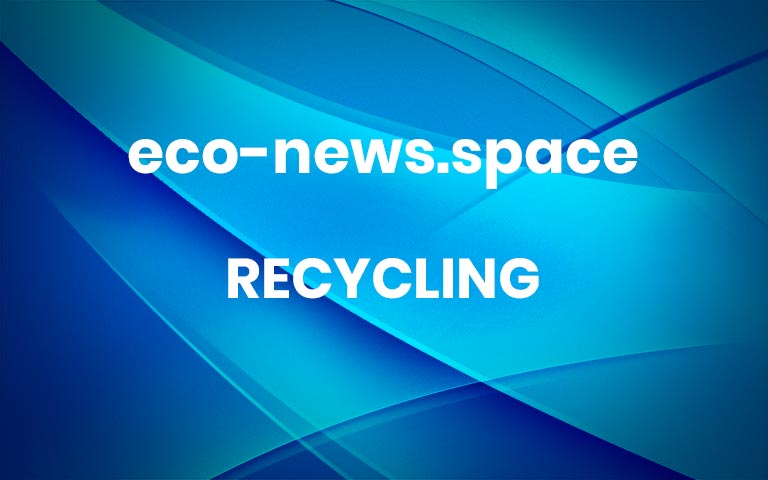
Recycling mercury-containing items found around the home and workplace is good for the environment, so it’s vital to know where to recycle them in Australia. Mercury is used in many household items, including batteries, light bulbs, mobile phones, laptops and even dental fillings. Recycling mercury-containing products keeps items that have reached the end of their […] More

April 22 marks the arrival of Earth Day, which provides all of us with a good reason to think of ways to live more sustainably. For more than 20 years, the MIT Working Green Committee has helped community members do just that by encouraging the reuse and recycling of possessions.
Made up entirely of volunteers, the committee has played an important role in promoting more sustainable operations at MIT and raising awareness of the importance of conservation.
“We try to provide a place for people to learn how to live and work in a more environmentally friendly way,” says committee co-chair Rebecca Fowler, a senior administrative assistant in MIT’s Office of Sustainability.
The committee hosts regular Choose to Reuse events to give MIT’s community members a chance to donate unwanted items — or find free things that just might become prized possessions. It also provides resources to help host more sustainable events, make more sustainable purchasing decisions, and learn more about recycling.
“The recycling industry is very frustrating, so people are always asking what to do,” Fowler says. “They feel like they make the wrong decisions and just want to know how to do it. We get a lot of questions, and we’re always there to help find answers.”
Committee members say they’ve realized devoting a little time each month to things like recycling education, and hosting events can make a big difference in reducing waste. In last month’s Choose to Reuse event, more than 100 people dropped off thousands of items including clothing, housewares, and office supplies. MIT’s always-active Reuse email lists, which the committee encourages community members to join, are another great way to pass gently used items to others who can give them new life.
“The goal is to keep things out of landfills, and the Choose to Reuse event shows you immediate results,” says committee co-chair Gianna Hernandez-Figueroa, who is the assistant to the director at the MIT AgeLab. “It’s inspiring because people are excited to put things in the hands of someone who is going to repurpose it. It’s a circular event that’s really beautiful.”
Choose to Reuse events are typically on the third Thursday of every other month, although the next one — the last for the spring semester — is on Monday, April 24.
The committee is one of the only groups on campus run by support staff, whose responsibilities involve clerical duties, data processing, and library and accounting functions, among other things. It is a subcommittee of the Working Group for Support Staff.
The committee began as the Working Group on Recycling in 2000 at a time when MIT’s recycling rate was around 11 percent. By 2006, MIT had reached a 40 percent recycling rate and received a Go Green Award from the City of Cambridge. That year the committee earned an MIT Excellence Awards for its work.
Around 2011, the group started hosting Choose to Reuse events, which became an instant success.
“I really believe in the gift economy, specifically in academic settings where you have a lot of international students,” Hernandez-Figueroa says. “Plus, Boston is an expensive city!”
For a long time, the group was run by Ruth Davis, who served as MIT’s manager for recycling and materials management and retired last year. Since Davis left, others have stepped up.
“A lot of the volunteers have been around since the first Choose to Reuse event 13 years ago,” Fowler says, adding that the committee is always looking for more volunteers. “They’re all very committed to the event and to the cause.”
The organization is also a way for support staff to gain new skills. Fowler credits her experience working on the committee with improving her project management and website design abilities.
“We really emphasize capacity building,” Fowler says. “If there’s a skill a volunteer would like to develop, we can explore ways to do that through the committee. That’s something I’d like to continue: finding people’s strengths and helping them build their careers.”
Overall, Fowler says the committee aligns with MIT’s commitment to make an impact.
The group’s long history “shows a commitment to environmentalism and sustainability and a yearning to do more beyond what is in your job responsibilities,” she says. “It really shows the commitment to volunteerism of MIT’s staff members.” More


